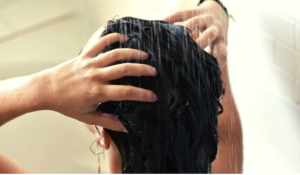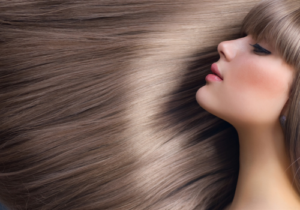Understanding the basics of professional coloring
To achieve salon-quality hair color, it's crucial to understand the basics of hair coloring. professional coloring. This article will guide you through the essential steps for successfully coloring your hair at home, using professional techniques.
The importance of professional coloring
Professional impact of hair coloring
Visit hair salons offer expertise that goes beyond the simple application of colorants. They assess the condition of your hair, choose the appropriate products and apply specific techniques to prevent damage. Professional coloring generally lasts longer and provides a more uniform finish.
Differences between professional and at-home hair coloring
Although at-home coloring kits are more affordable and convenient, they don't always guarantee optimal results. Professional hairdressers use high-quality products and adjust formulas according to your hair type and desired color. What's more, they have a better knowledge of blends and application techniques, which reduces the risk of disappointing results.
Professional coloring jargon
Vocabulary related to professional coloring
For a successful coloring like a pro, familiarize yourself with the following terms :
- Neutralization Technique used to balance unwanted tones.
- Colorimetry Science of color applied to hair to create harmonious shades.
- Oxidizer Product that opens hair cuticles and allows colorant to penetrate.
- Decolorization Process that removes hair's natural color using bleaching agents.
- Reflections Subtle color changes added to give hair dimension and movement.
Types of colorants available on the market
Visit colorations are generally divided into several categories:
- Permanent hair color Lasting color change. Ideal for covering gray hair or for a radical color change.
- Semi-permanent hair color Offers temporary color that fades gradually. Ideal for no-obligation experimentation.
- Temporary coloring Fades after a few washes. Perfect for occasional color changes or fashion effects.
- Tone A light process that adds nuance without penetrating deep into the hair. Used to intensify natural color or add subtle highlights.

Assess hair's natural color and condition
Understanding your hair's natural color
The importance of natural color in professional hair coloring
The key to successful professional hair coloring is to understand your hair's natural color. This starting point is crucial in predicting the final result. This is because your natural color influences the way the color pigment will interact with your hair. A thorough knowledge of this hue enables professionals to design a personalized coloring strategy, knowing that darker hair in particular will require bleaching to obtain lighter shades.
How to determine your own hair color
Determining your natural hair color may seem simple, but it requires careful attention to specific shades. Your hair may have warm or cool tones, which will impact the final choice of coloring shade. To identify your natural hair color :
- Analyze your roots: Color at the roots is often closer to your natural shade.
- Observe in natural light: Artificial light can distort color perception.
- Consult a professional: If you have any doubts, a hairdresser can help you determine the exact color with precision.
Assess hair condition and texture
How to assess hair health before coloring
For a successful coloringIt's essential to assess the health of your hair. Damaged, dry or brittle hair may not withstand the chemical process of coloring, which can lead to uneven results or cause further damage. Here's how to assess your hair's health:
- Elasticity Pull gently on a wet strand of hair. If it returns to its original shape without breaking, your hair is healthy.
- Porosity Slide your fingers along a strand of hair, from ends to roots. If it's rough, your hair is probably porous and absorbs chemicals too easily.
- Shine and Softness Healthy hair is generally shiny and soft to the touch. If your hair looks dull or rough, it could be damaged.
How hair texture can affect coloring
Hair texture also plays a crucial role in the coloring process. Hair can be fine, thick, curly or straight, which influences the way colorants work. For example:
- Fine hair Fine hair absorbs colorants more quickly, which can result in more intense color. It's also more likely to become brittle during the coloring process.
- Thick hair Thick hair requires a more generous application of colorants and more time for the color to penetrate evenly.
- Curly hair These hair types can be drier and require extra moisturizing before and after coloring to maintain their health and elasticity.
A professional colorist will take your hair's texture into account to choose the right products and adjust the application time, guaranteeing optimal, even results.
Careful assessment of your hair's natural color and condition is an essential step in any professional hair coloring process. Not only does it enable you to choose the right techniques and products, but it also helps preserve your hair's long-term health and shine.
See also: How to eliminate redness from hair colouring?
Choosing the right type and shade of hair color
The different types of color
Permanent vs. temporary colorations
There are many different types of hair color available, each with its own characteristics and offering different results. Understanding these distinctions will help you choose the type of hair color that best suits your needs and expectations.
- Permanent colorations Colorants: They penetrate deep into the hair and permanently alter its natural color. The coloring molecules are mixed with an oxidizing agent, usually hydrogen peroxide, which helps open the hair cuticles and allows the colorant to penetrate. This type of coloring is ideal for covering white or gray hair and for achieving drastic color changes. However, regular retouching of the roots is necessary to maintain an even appearance.
- Temporary colorations They deposit color on the hair surface without penetrating deeply. They fade gradually over a few shampoos. This type of color is perfect for testing out new colors or for special occasions with no long-term commitment. They are less aggressive on the hair, but their duration is limited.
The advantages and disadvantages of each type
Choosing between permanent and temporary hair color depends on a number of factors, such as the desired durability, the condition of your hair, and the level of commitment you're willing to make.
- Permanent hair color :
- Benefits :
- Ideal for significant color changes and to cover gray hair.
- High durability, reducing the frequency of applications.
- Wide range of shades and tints available.
- Disadvantages :
- Root maintenance required every 4 to 6 weeks.
- May cause hair damage due to use of harsh chemicals.
- Color errors are more difficult to correct.
- Benefits :
- Temporary coloring :
- Benefits :
- Ideal for experimenting with new shades without long-term consequences.
- Less risk of capillary damage, as no harsh chemicals are used.
- Fades gradually, useful for those who like to change color frequently.
- Disadvantages :
- Fast leaching, requiring more frequent applications to maintain desired appearance.
- Less effective for covering gray hair or for drastic color changes.
- Benefits :
How to choose the right shade of hair color
View a color chart
- Before choosing a shade, it's essential to consult a color chart, which shows how the color will appear on different levels of natural hair. This visual reference will help you get a better idea of the final result.
- Hair salons generally have detailed color charts that include all available shades, classified by color family.
Consider your skin tone
Your skin tone plays a crucial role in your choice of hair color. A well-chosen shade can enhance your face, while an inappropriate shade can make it look dull or tired.
-
- Skins with warm undertones Warm colors like golden brown, copper and red are ideal.

Practical steps for successful professional hair coloring at home
Preparation before coloring
Choosing the right products
For a successful professional coloring at homeWith the right products, it's essential to choose the right ones. Choose trusted brands that offer professional-quality products. You can also consult a hairdresser or specialist for personalized recommendations based on your hair type and desired shade.
Protect your environment and your clothes
Before you start, prepare your work area to avoid dye stains. Use an old towel to protect your clothes and a protective cape for your neck. Also cover surrounding surfaces with newspapers or towels.
Color application
Divide your hair into sections
Dividing your hair into sections makes it easier to apply dye evenly. Use clips to separate hair into four main sections: two at the front and two at the back. This method ensures that each strand of hair receives an adequate amount of product.
Apply the colorant
Apply colorant section by section, starting at the roots and working through to the ends. Use a coloring brush for precise application, and be sure to saturate each strand. Be sure to follow the manufacturer's instructions on application time.
Post-color care
Rinse and shampoo
Once the application time has elapsed, rinse your hair thoroughly with lukewarm water until the water runs clear. Then use the shampoo and conditioner included in the coloring kit to cleanse and moisturize your hair.
Color maintenance
To maintain the radiance of your color, use products specially designed for color-treated hair. Avoid shampoos containing sulfates, which can fade color more quickly. Apply moisturizing masks regularly to nourish your hair and preserve its shine.
FAQ about professional hair coloring at home
What's the difference between permanent and semi-permanent hair color?
Permanent hair color permanently alters hair color by penetrating deep into the hair fiber. It covers gray hair and requires regular touch-ups at the roots. Semi-permanent color tints the surface of the hair and fades after several washes, offering a temporary solution with no long-term commitment.
Is it necessary to bleach my hair before applying a new color?
Bleaching is necessary if you want to lighten your hair or achieve a brighter shade. However, it can damage your hair, so it's important to consult a professional to assess the need for this step and choose the appropriate products.
How can I prevent my color from becoming too dark?
To prevent your color from becoming too dark, choose a lighter shade than desired, or test the colorant on a small section of hair before applying the full amount. Strictly adhere to the recommended application time and regularly monitor color development.
Can I color my hair if I have a sensitive scalp?
People with sensitive scalps should be cautious when applying colorants. Opt for hypoallergenic products and always test a small amount on the skin 48 hours before full application to avoid any allergic reaction.
How long should I wait between two colorings?
We recommend waiting at least 4 to 6 weeks between colorings to avoid damaging your hair. This also allows your hair to rest and regenerate between chemical treatments.





